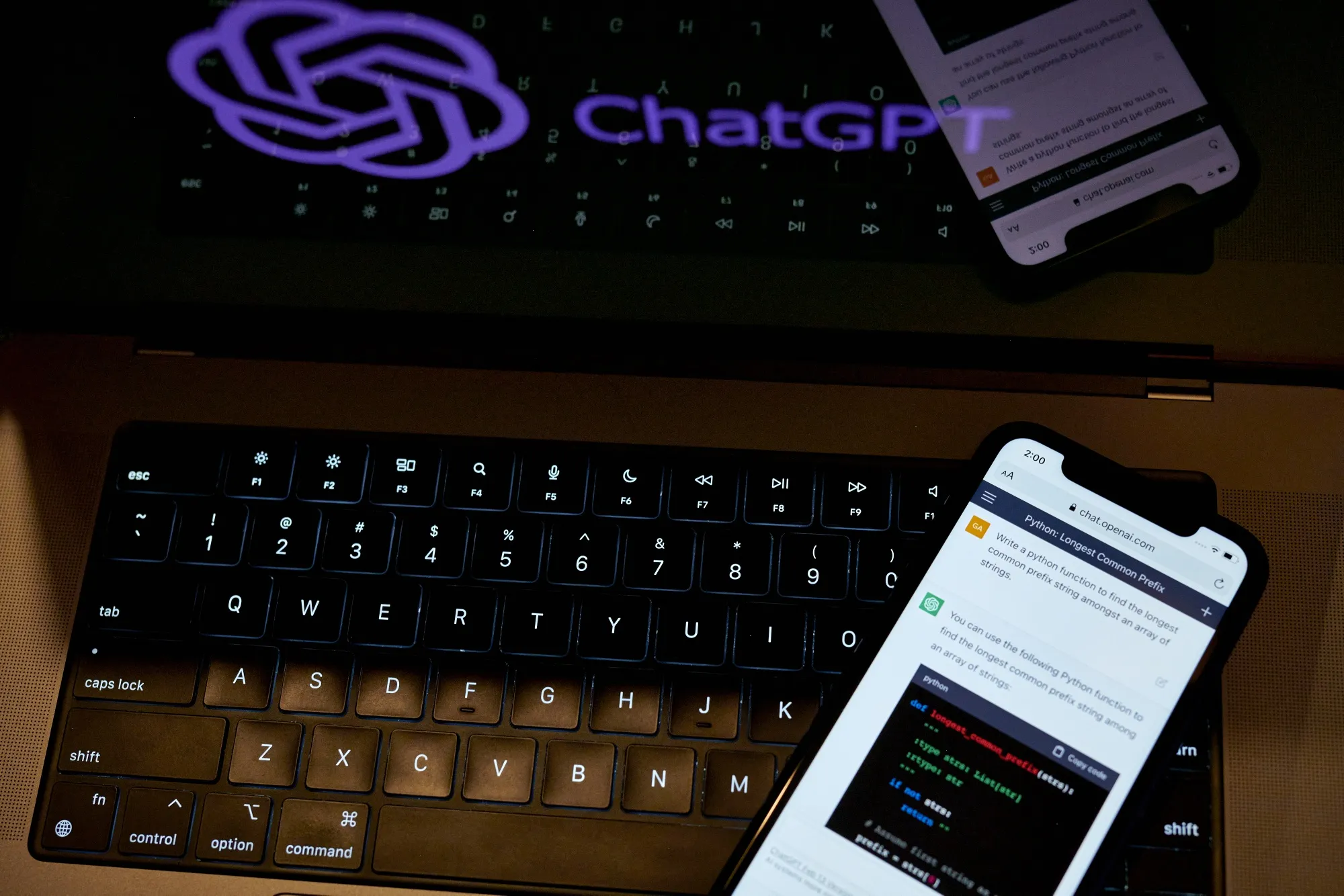
Gift this article
In this Article
Follow
Follow
Have a confidential tip for our reporters? Get in TouchBefore it’s here, it’s on the Bloomberg Terminal LEARN MORE
By Olivia Solon and Seth Fiegerman
September 16, 2024 at 4:23 PM GMT+7
Save
When OpenAI launched its ChatGPT chatbot in 2022, it looked as if a new generation of artificial intelligence tools was about to transform every corner of the economy and people’s lives. Fast-forward to 2024 and AI features have been added to countless services, but the impact has arguably not been quite so dramatic.
AI has not created vibrant new professions. Neither has it yet laid waste to entire industries. A growing number of high-profile and well-funded startups have bowed out of the race to develop cutting-edge AI models. Much of the newsflow around the new generation of AI has focused on its downsides — a tendency to perpetuate harmful biases or amplify misinformation.
In September, Microsoft-backed OpenAI began rolling out an updated model that the company said can engage in human-like reasoning to work through more complex questions from users, including fielding complicated math and coding problems. Alphabet’s Google and Anthropic are also working on similar capabilities for their products. OpenAI Chief Executive Officer Sam Altman called it the “beginning of a new paradigm.”
The concept of reasoning is difficult to define and measure, but the goal for the tech companies is clear: They’re out to prove that AI tools can act as sophisticated “co-pilots” and “agents,” capable of helping people with personal and professional tasks. In doing so, they hope to shore up AI’s long-term potential.
What is generative AI?
It’s a type of software that can carry out complex tasks such as writing a story or creating an image in response to simple written prompts. During training, these systems are fed vast amounts of information (for example, every book available freely on the internet) and are taught how to use that data to craft something new, such as the blurb for a new novel.
The systems apply what they learn from such efforts to future endeavors and their responses become gradually more sophisticated and nuanced. The results are unique and — in a sense — original, but are still effectively a complex form of mimicry.
How Large Language Models Work, Making Chatbots Lucid: QuickTake
Why the excitement?
Generative AI’s ability to quickly acquire new skills and perform them at high speed means it could help with all kinds of work now done by humans, such as drafting legal contracts or debugging software. Fortune 500 companies are now using enterprise versions of chatbots from OpenAI and its rivals to summarize documents, speed up coding tasks and draft emails. Goldman Sachs Group Inc. said generative AI could do as much as a quarter of the work currently carried out by people. Analysts at UBS Group AG see the market for the technology easily exceeding $1 trillion.
How has generative AI evolved?
Much of the attention back in 2022 was on AI systems that can generate text and images. Today there are standalone AI services that can clone a person’s voice, generate a song in seconds or create short videos. Increasingly, AI companies are focusing on “multimodal” systems that can process and respond to a range of inputs, including text, images and audio.
For example, an exasperated parent might be able to show an image of a math problem to a chatbot and ask for an explanation on how to solve it. Demis Hassabis, CEO of Google’s AI lab DeepMind, showed off a prototype AI assistant that can respond to video inputs in real time. Generative AI is also being heavily integrated into more popular products. Google has added it to its core search engine. Apple is planning to bring OpenAI’s technology to the iPhone, along with a suite of other AI tools, later this year.
A Cheat Sheet to AI Buzzwords and Their Meanings: QuickTake
What does it mean for an AI to reason?
For much of the past two years, ChatGPT users have grown accustomed to having the chatbot spit out near-instantaneous responses — some accurate, some not so much — to a wide range of prompts. But OpenAI’s new 01 model will behave somewhat differently. Before responding, the new software will pause for a matter of seconds while, behind the scenes and invisible to the user, it considers a number of related prompts and then summarizes what appears to be the best response. This technique is sometimes referred to as “chain of thought” prompting.
In a blog post, OpenAI referred to it as “thinking.” In OpenAI’s tests, this approach made less of a difference for queries about writing and editing, but people found it resulted in better answers for complex questions related to computer programming, data analysis and math problems.
“The next model update performs similarly to PhD students on challenging benchmark tasks in physics, chemistry, and biology. We also found that it excels in math and coding,” the company said. “For complex reasoning tasks this is a significant advancement and represents a new level of AI capability.”PlayPlay
2:17Google and Microsoft are losing the AI race to Mark Zuckerberg, says Bloomberg Opinion columnist Parmy Olson. Here’s why the AI giants could learn a thing or two from the Meta boss.
What’s the likely economic impact of generative AI?
That remains unclear. Federal Reserve Chair Jerome Powell said generative AI could boost productivity growth, but “probably not in the short run.” Some economists foresee a leap in productivity triggering wage gains that will help workers recoup some of the earning power they’ve lost since the 2008 financial crisis.
A study by researchers at Stanford University and the Massachusetts Institute of Technology found that staff at one Fortune 500 software firm became 14% more productive on average when using generative AI tools. The lowest-skilled workers became 35% faster. What wasn’t clear was the impact of this on their higher-paid colleagues, whose costlier skills may no longer be required.
In an optimistic scenario, skilled employees whose jobs get automated will find new work in growth areas created by generative AI. However, early signs pointed to a painful bout of upheaval. International Business Machines Corp. plans to stop or slow hiring for thousands of roles it expects to be replaced by AI. Swedish buy now, pay later firm Klarna Inc. said it would freeze hiring as ChatGPT cut down the time required for certain tasks. And language-learning software company Duolingo Inc. chose not to renew about 10% of its contractors, partly due to AI.
What are generative AI’s limitations?
The answers it pieces together from available published information can sound so authoritative that users may assume it has verified their accuracy. Stripped from useful context such as the source of the information, and with few of the obvious imperfections that often signal unreliable material, the content can be a minefield for someone who isn’t sufficiently well-versed in a subject to notice a response that is biased, flawed or simply wrong.

Get the Singapore Edition newsletter in your inbox.
Go beyond the headlines with insights into one of Asia’s most dynamic economies. Delivered weekly.
Bloomberg may send me offers and promotions.
Sign Up
By submitting my information, I agree to the Privacy Policy and Terms of Service.
AI chatbots have repeatedly made errors when asked for news about current events. Generative AI systems also amplify harmful biases and stereotypes found in the data on which they’re built – a significant problem as the technology increasingly gets deployed into sensitive areas like hiring and healthcare. AI companies have struggled to address the bias problem: Google, for example, attempted a technical fix to make its image generator show more diverse outputs, but it resulted in the tool refraining from producing pictures of White people.
What does generative AI mean for society?
As these tools become more sophisticated, so does the potential for mischief-making.
Some AI platforms have been taken down or tweaked to stop them from regurgitating hate speech, and ChatGPT allows users to flag distasteful responses to improve the system. But users have found workarounds. An AI might not pick up on gender or racial biases that a human would notice in books and other texts.
It’s also a potential weapon for deceit. For example, one AI audio deepfake of Joe Biden was used to urge people in New Hampshire not to vote in the US presidential primaries. Teachers worry about students getting chatbots to do their homework. Lobbying firms could use AI to fake thousands of different letters supposedly from citizens to influence the decisions of lawmakers.
In an open letter published in March 2023, 1,000 technologists and researchers called for a pause in AI development to allow more time to weigh the “profound risks to society and humanity.” Instead, the technology continues to advance.
The Reference Shelf
- QuickTake explainers on why AI is so costly to develop, AI and copyright, AI regulation, AI in finance and deepfakes.
- More on OpenAI’s faster, cheaper AI model, GPT-4o.
- Bloomberg Opinion’s Parmy Olson says Google’s AI phones will erode trust in everything.
- A highly cited paper outlining problems with the large language models used for AI chatbots.





